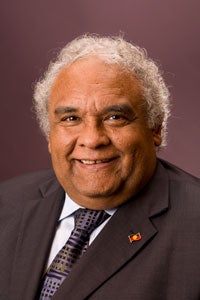Close the Gap - National Indigenous Health Equality Targets
Close the Gap
Preface
 On 20 December 2007, the Council of Australian Governments (COAG) agreed to a partnership between all levels of government to work with Indigenous1 communities to achieve the target of ‘closing the gap’ on Indigenous disadvantage; and notably, to close the 17-year gap in life expectancy within a generation, and to halve the mortality rate of Indigenous children within ten-years.
On 20 December 2007, the Council of Australian Governments (COAG) agreed to a partnership between all levels of government to work with Indigenous1 communities to achieve the target of ‘closing the gap’ on Indigenous disadvantage; and notably, to close the 17-year gap in life expectancy within a generation, and to halve the mortality rate of Indigenous children within ten-years.
While Australian governments had previously committed to raise the standard of Indigenous Australians’ health to that of other Australians, this commitment was historic in that it was the first time Australian governments had agreed to be accountable for reaching this goal by placing its achievement within a time-frame.
In part, this was a response to the Campaign for Indigenous Health Equality, led by
the National Aboriginal Community Controlled Health Organisation, the Australian Indigenous Doctors’ Association, the Congress of Aboriginal and Torres Strait Islander Nurses, the Indigenous Dentists’ Association of Australia, Oxfam Australia, Australians for Native Title and Reconciliation and myself and involving a coalition of 40 or so concerned organisations. The Campaign had begun to organise in March 2006 in response to a number of recommendations for a targeted approach to achieving Indigenous health equality I had made in my Social Justice Report 2005. ‘Close the Gap’ was the catch cry and the public face of the Campaign.
The Campaign culminated in the National Indigenous Health Equality Summit (Summit) in Canberra over 18 – 20 March, 2008. On the final day, at the Great Hall, Parliament House, the Prime Minister, the Hon. Kevin Rudd MP, the Minister for Health and Ageing, the Hon. Nicola Roxon MP, the Opposition Leader, the Hon. Dr Brendan Nelson MP, as well as leaders of Indigenous health peak bodies2 and the mainstream health peak bodies3 signed a historic Close the Gap Statement of Intent in which they agreed to work in partnership to achieve equality in health status and life expectancy between Indigenous and non-Indigenous Australians by the year 2030. As a part of this effort they agreed to ensuring that primary health care services and health infrastructure for Indigenous Australians were capable of bridging the gap in health standards by 2018.
Importantly, they also committed to measuring, monitoring, and reporting on their joint efforts in accordance with a range of supporting sub-targets and benchmarks. The Indigenous Health Equality Targets and the benchmarks contained here are presented to that end. These have been developed with a range of experts, (and particularly Indigenous experts), with experience in Indigenous health.
I believe that the COAG commitments, the signing of the Close the Gap Statement of Intent and the development of the Indigenous Health Equality Targets mark a watershed in the history of Indigenous health: the moment when we dared to take our dreams of a future in which Indigenous and non- Indigenous Australians stand as equals in terms of health and life expectation and began to turn them into reality; the moment when we said ‘enough is enough’ and began to set in place an ambitious, yet realistic, plan to bring Indigenous health inequality to an end within our lifetimes.
Yours sincerely,
Mr Tom Calma
Aboriginal and Torres Strait Islander Social Justice Commissioner, and
Chair of the Steering Committee for the Close the Gap campaign for Indigenous Health Equality
Endnote
[1] The Aboriginal and Torres Strait Islander Social Justice Commissioner recognises the diversity of the cultures, languages, kinship structures
and ways of life of Aboriginal and Torres Strait Islander peoples. There is not one cultural model that fits all Aboriginal and Torres Strait Islander
peoples. Aboriginal and Torres Strait Islander peoples retain distinct cultural identities whether they live in urban, regional or remote areas of
Australia. Throughout this document Aborigines and Torres Strait Islanders are referred to as ‘peoples’. This recognises that Aborigines and Torres
Strait Islanders have a collective, rather than purely individual, dimension to their livelihoods. Throughout this document, Aboriginal and Torres
Strait Islander peoples are also referred to as ‘Indigenous peoples’. The use of the term ‘Indigenous’ has evolved through international law and is
appropriately used in a human rights based context.
[2] The National Aboriginal Community Controlled Health Organisation, the Australian Indigenous Doctors’ Association, the Congress of Aboriginal
and Torres Strait Islander Nurses, the Indigenous Dentists’ Association of Australia.
[3] The Australian Medical Association, the Royal Australian College of General Practitioners, the Royal College of Australasian Physicians and the
Australian General Practice Network.
